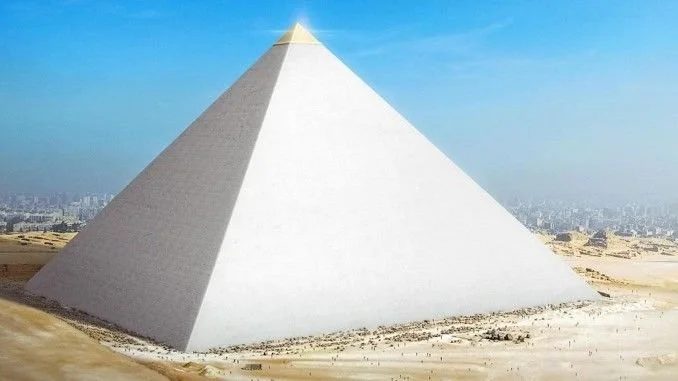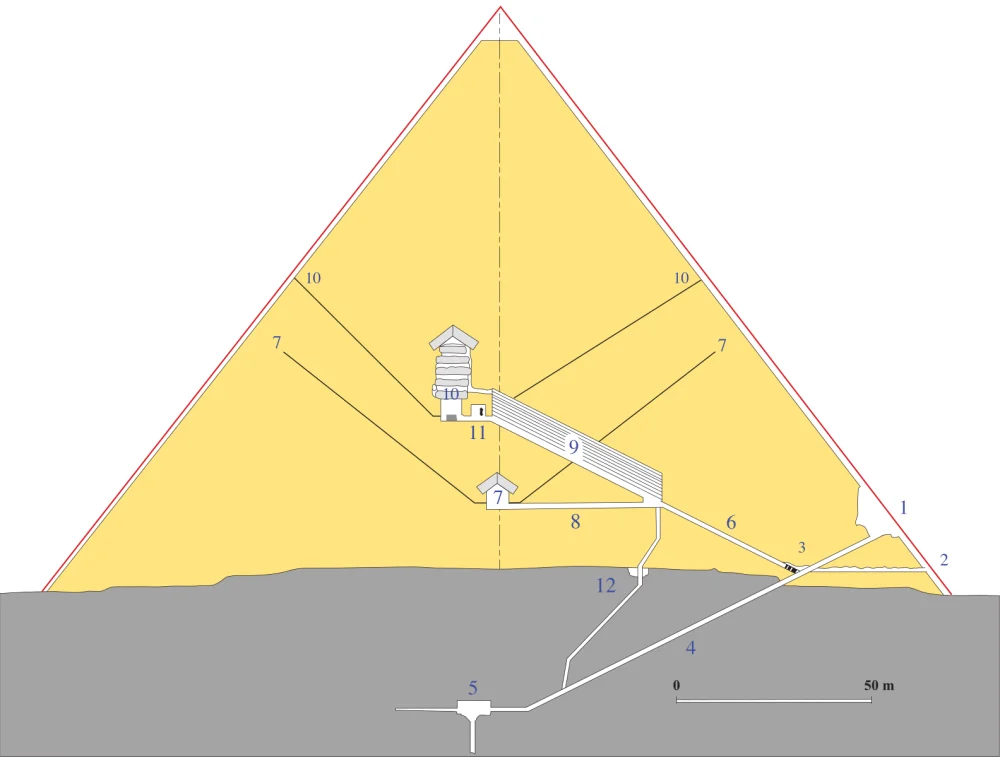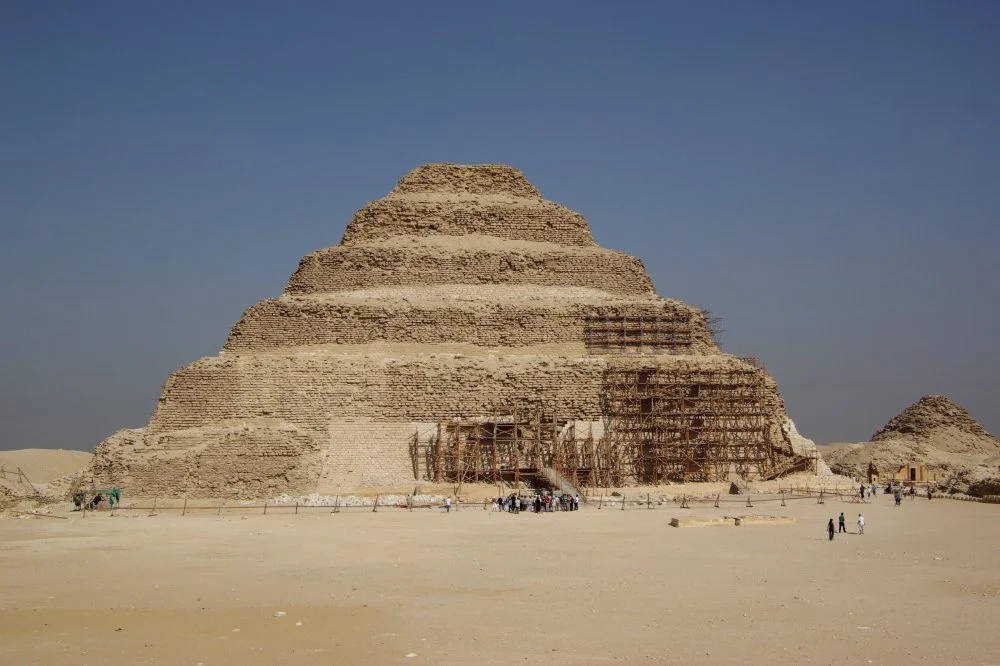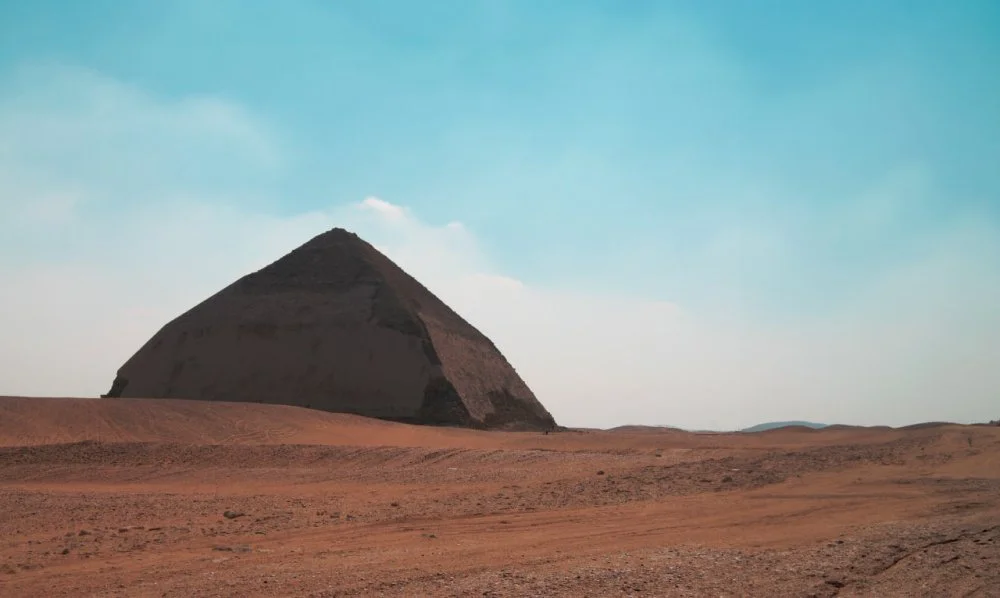Following Napoleon’s invasion of Egypt in the early nineteenth century, Egyptomania swept across the world, and ever since then, scientists have been trying to unlock the secrets of the Egyptian pyramids. Yet, even today, these majestic structures remain some of the most mysterious monuments of antiquity, and new hypotheses about them are almost constantly emerging. Thanks to archeological excavations and modern technology, however, it has been possible to unravel the secrets of the pyramids, and many long-standing myths about them have finally been recognized as untenable. Let’s find out more about these myths!
- 1. Myth 1: The pyramids were built by slaves.
- 2. Myth 2: We see the pyramids as they were in ancient Egypt.
- 3. Myth 3: The ancient Egyptians aligned the pyramids with the stars.
- 4. Myth 4: The pyramids were built in the middle of the desert.
- 5. Myth 5: Egypt is home to the world’s largest pyramid.
- 6. Myth 6: Many mummies have been found in the pyramids.
- 7. Myth 7: All Egyptian pyramids have smooth sides.
Myth 1: The pyramids were built by slaves.
The hypothesis that the pyramids were built by slaves has long been part of historical scholarship. Herodotus, an ancient Greek scholar from the fifth century BCE, is believed to have started this myth. In his Histories,i
Myth 2: We see the pyramids as they were in ancient Egypt.
Although the Egyptian pyramids are some of the best-preserved monuments in the world (even the youngest pyramid, the Pyramid of Menkaure,i

Reconstruction of the Pyramid of Giza/From open sources
Thanks to the limestone, their bright white walls glistened under the hot Egyptian sun. Over time, this coating disappeared, either collapsing due to the effects of time and earthquakes, or being used in the construction of later buildings in Cairo.
In addition, the pyramids in Giza were originally topped with stones called pyramidions, which were covered with electrum, a gold-silver alloy. The pyramidions on the tops of the pyramids looked like pointed gems, but time has been merciless to them as well.
Myth 3: The ancient Egyptians aligned the pyramids with the stars.
It is a proven fact that the ancient Egyptians paid great attention to the night sky. They studied the constellations and focused on the movement of the stars to help in their agricultural endeavors. However, the idea that the pyramids were built according to the arrangement of the stars in the sky has no scientific basis. The proponent of this (now rather marginal) theory was a researcher of ancient Egypt named Robert Bauval, who in the 1980s proposed that the pyramid complex in Giza was located according to three stars of Orion’s Belt. Indeed, the ancient Egyptians associated the stars of Orion with Osiris, the guide to the world of the dead, but Bauval’s theory was not supported by astronomers, who questioned the accuracy of Bauval’s physical measurements, nor by Egyptologists.
Myth 4: The pyramids were built in the middle of the desert.
The theory that the pyramids were built using a long-vanished waterway under the desert, along which the Egyptians delivered building materials, has existed for a very long time. However, it wasn’t until the spring of 2024 that US archeologists potentially succeeded in proving one of the main hypotheses of the appearance of the pyramids. Egyptologists from the University of North Carolina at Wilmington discovered that the pyramids were indeed built along the vanished arm of the Nile, which is now hidden beneath desert sand and farmland.

The water course of the ancient Ahramat Branch borders a large number of pyramids dating from the Old Kingdom to the Second Intermediate Period, spanning between the Third Dynasty and the Thirteenth Dynasty/ Eman Ghoneim/From open sources
Scientists used satellite imagery, historical maps, and geophysical surveys to trace the vanished path of the river that was buried underground by drought and sandstorms thousands of years ago. They discovered a branch called Ahramat (from the Arabic word for pyramid), about 40 miles (64 kilometers) long and 200 to 700 yards wide. This river branch had once bordered the thirty-one pyramids in the Giza area, and its discovery explains the high density of pyramids between Giza and the village of el-Lisht in what is now the harsh Sahara Desert.

Flock of birds flying at sunset over the Cairo cityscape with the famous Giza pryramids in the background in Egypt /Getty Images
Myth 5: Egypt is home to the world’s largest pyramid.
The two great pyramids of Giza, now on the outskirts of Cairo, are of incredible height. Both were built during the reign of the pharaohs of the Fourth Dynasty of the Old Kingdom. The Great Pyramid of Giza, 146 meters high, was built by Khufu, better known by his Greek name Cheops, and the other, 143 meters tall, was built by Khafre (Chephren). Today, these pyramids are somewhat lower: erosion and vandalism have reduced Khufu’s pyramid by almost 10 meters. However, the height does not make this pyramid the largest in the world—it is only the tallest. The largest pyramid in the world is located near the Mexican city of Pueblo and is known as the Great Pyramid of Cholula or Tlachihualtepetl. Although this pyramid is only 66 meters high, its base measures 450 by 450 meters and its volume is 4.45 million (!) cubic meters. It is believed that it was built in several stages by different Mesoamerican peoples over several centuries (more precisely, from 200 BCE to the ninth century), but was eventually abandoned. Today, it resembles a natural hill.

Modern view of the Cholula pyramid/Wikimedia commons
Myth 6: Many mummies have been found in the pyramids.
The Egyptian pyramids were indeed the tombs of the pharaohs—this fact is now beyond doubt. However, almost no remains of any pharaohs (or anyone else) have been found in any of them. All tombs and sarcophagi in excavations usually appear empty. Even in the pyramid of Khufu/Cheops, the body of the great pharaoh was never found, and the granite sarcophagus standing in the center of the tomb turned out to be completely empty when it was discovered by archeologists.

Elevation diagram of the interior structures of the Great Pyramid viewed from the east. The inner and outer lines indicate the pyramid's present and original profiles. 1. Original entrance,2. Robbers' Tunnel (tourist entrance) 3, 4. Descending Passage 5. Subterranean Chamber 6. Ascending Passage 7. Queen's Chamber and its "air-shafts" 8. Horizontal Passage 9. Grand Gallery 10. King's Chamber and its "air-shafts" 11. Grotto and Well Shaft /Wikimedia Commons
Scholars attribute this to the fact that the pyramids were looted over many centuries and many mummies were probably removed and are now irretrievably lost. Another theory proposed by the ancient Greek historian Diodorus Siculus suggested that the pyramids were only built to distract attention, and that the pharaohs, worried about the privacy of their remains, secretly requested that they be buried elsewhere. It is important to note that the tradition of burying pharaohs in pyramids can only be attributed to the pharaohs of the Old Kingdom (and some of the Middle Kingdom). In the time of the New Kingdom (which was not so new in our eyes, as it lasted from the sixteenth to the eleventh century BCE), pyramids were no longer being built. The rulers of Egypt at that time were buried in the Valley of the Kings in tombs cut directly into the rock.

View of entrance to Burial Chamber, KV7, the Tomb of Ramses II, Valley of the Kings/Alamy
Myth 7: All Egyptian pyramids have smooth sides.
The shape of Egyptian pyramids, in fact, evolved over a very long period of time. When the first pyramid was built around 2780 BCE by King Djoser’si


The Step Pyramid of Djoser at Saqqara/Wikimedia commons
The transition from the step pyramid to the pyramid with smooth sides took place during the Fourth Dynasty, during the reign of its founder Sneferu.i
Sneferu apparently wanted to build a pyramid with smooth sides, and he almost succeeded at Dahshur. At first, everything went well, but about halfway through the construction, the angle of inclination of this pyramid decreased from more than 51 degrees to about 43 degrees, causing its sides to rise less steeply than necessary, and it acquired a bizarre shape, and today it is called a ‘bent pyramid’. The angle was probably changed by the builders to give the building more stability. This pyramid can be considered ‘smooth’, although it looks rather unusual and squat.

Bent Pyramid/Wikimedia commons
However, Sneferu managed to achieve what he wanted. The first successfully built ‘smooth’ pyramid in the correct shape is also his. Part of the necropolis of Dahshur, it is also called the Red Pyramid because the color of its stones takes on a distinct reddish hue in the rays of the setting sun.

Red Pyramid/Wikimedia commons
